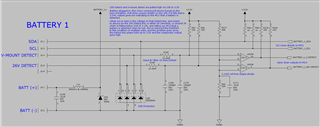Other Parts Discussed in Thread: TPD4E02B04, STRIKE, ESDS311
Tool/software:
Hello,
Last year I created this forum post:
ESD204: Utilization on I/O Detection Circuit as Well as I2C
I have a couple additional questions/comments after finally getting back into this.
- The originally used ESD8004 (On Semi) failed due to EOS event, I had 2 analyzed, both had a short between the suspect pin (pin 2) and GND, and one of the 2 had an open fuse bond wire.
- Taking into consideration your comments about Snapback, On Semi support team also mentioned snapback about "typical issues". I've been reading a bunch of articles and can understand that my voltage is always present (either 3.3V or the divided voltage of around 1.8V), so if we snapback we may be in that region where we latch up. However, the ESD8004 has a latch up a Holding reverse current of 25mA, I'm nowhere near there so I'd think latchup is not likely.
- One of the brief articles I read was from TI, SSZTAW9 (The dangers of deep snap-back ESD circuit-protection diodes), where they mention various components. I'm interested in utilizing more of these discrete ESD components with low capacitance. I have some lines that are I/O (like these detection lines), and some that are I2C/SMBus.
- You previously mentioned TPD4E02B04, but I'd like to do away with this tiny body component if I don't have to use it. It is very difficult to rework if necessary, and I have physical room on the PCBA.
- One issue I'm having, is I can't re-create this failure. I've been testing repetitive connection of my battery to my charger, which triggers this circuit, but also have ESD'd this particular pin (only have gone up to 2kV so far), and I'm not seeing any latching type of behavior. Unless I'm on the hairy edge of functionality.
Can you shine any more light on what I'm seeing, and how TI can best provide insight into appropriate ESD protection for this circuit?
Here is my circuit again in its entirety. The failure point is on 26V DETECT (pin 2/9 of ESD8004), there is a 12k pulldown with a 0.1uF cap in parallel on the battery side, so when the battery is plugged in, the voltage drops and the battery is "detected".

Thank you in advance for additional assistance
Mike


